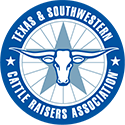
Veterinary Feed Directive — Your Veterinarian Is an Important Part of VFD Rule
By Kristin Lewis Hawkins

Full implementation of the FDA’s Guidance #213 will significantly change the way medically important antibiotics are used in animal agriculture by introducing the requirement for a Veterinary Feed Directive to purchase products to be used in the food or water of an animal destined for consumption. Under these new guidelines, animal producers or caretakers will need to obtain authorization from a licensed veterinarian to purchase these antimicrobials for the prevention, control or treatment of a specifically identified disease.
The Veterinary Feed Directive (VFD) final rule requires veterinarians to issue all VFDs within the context of a veterinarian-client-patient-relationship (VCPR), and specifies the key elements that define a VCPR. These elements include that the veterinarian engage with the client, such as the animal producer, to assume responsibility for making clinical judgments about the animal’s health, have sufficient knowledge of the patient by virtue of patient examination and/or visits to the facility where the patient is managed, and provide for any necessary follow-up evaluation or care.
By requiring ranchers to consult with a veterinarian regarding the use of feed- and water-based antimicrobials, the FDA hopes to ensure the judicious use of such products under a defined set of circumstances and ailments. Off-label use for unapproved ailments or for production purposes will be illegal.
The final rule will require veterinarians to follow state-defined VCPR requirements, and in states where the FDA determines that no applicable or appropriate state VCPR requirements exist, veterinarians will need to issue VFDs in compliance with federally defined VCPR requirements.
“From a practical standpoint, this change will enable individual states to adjust the specific criteria for a VCPR to appropriately align with current veterinary practice standards, technological and medical advances, and other regional considerations,” said Dr. William Flynn, deputy director for science policy in FDA’s center for veterinary medicine. “This enables veterinarians to exercise their medical judgment to more effectively provide services to food animal producers in remote geographical areas where veterinary professional resources are limited and distances are great.”
The change also helps facilitate veterinarians working in consultation with other animal health professionals. However, the veterinarian will need to be licensed in the state in which the animals are located.
For the purposes of VFD regulations, the term “client” in VCPR typically refers to the person responsible for the care and feeding of the animals receiving the VFD feed. As described in the definition of the term “veterinary feed directive” the client may be the owner of the animals or another caretaker.
Veterinarians will play an integral role in the VFD rules by ensuring the proper use of medically important antimicrobial drugs according to label directions and only when appropriate to meet specific needs. By adding this level of oversight, the veterinarian can ensure proper use of the drug, including the appropriate amount of time and at the correct dose, to the proper animals.
Cattle raisers are advised to consult with their veterinarian to formulate a plan of action, should these products be needed. Producers without a relationship with a veterinarian will be required to consult with one to develop a VCPR to ensure the proper use of drugs under the VFD label. By assuming this responsibility, the veterinarian will be required to have a sufficient level of engagement with the client or producer to make clinical judgments about health and treatment by examination or facility visit and follow-up care.
“Veterinary Feed Directive — Your Veterinarian Is an Important Part of VFD Rule” is from the March 2016 issue of The Cattleman magazine.
